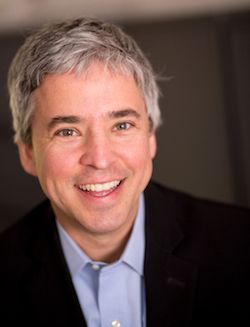Article
Physicians Are Ignoring Addiction Status and Prescribing Opioids Anyway
Author(s):
Many people on buprenorphine are still receiving opioid prescriptions.

Physicians are ignoring guidelines on safe prescribing of opioids.
“The statistics are startling,” G. Caleb Alexander, MD, MS, (pictured) an associate professor epidemiology at the Johns Hopkins Bloomberg School of Public Health (JHSPH), said in a news release in regards to a recent study conducted at the university.
Buprenorphine (Butrans/Purdue; others) is commonly used to treat opioid addiction. The prescription drug helps patients become less physically dependent on opioids and provides relatively mild withdrawal symptoms. In the journal Addiction, the JHSPH researchers reported that 2 in 5 people (43%) receiving buprenorphine are also receiving an opioid prescription.
“Policymakers may believe that people treated for opioid addiction are cured, but people with substance use disorders have a lifelong vulnerability, even if they are not actively using,” explained Alexander, who is the study’s lead author and co-director of the school’s Center for Drug Safety and Effectiveness.
The team analyzed data from 38,096 patients from 11 states in the United States. The patient data was gathered from a cohort of around 50 million patients filling 2 or more opioid prescriptions for any calendar year between 2006 to 2013. Of these, 55% were female and half ranged from 29 to 54 in age. The participants were using buprenorphine between January 2010 to July 2012 and first treatments lasted for a median of 55 days (interquartile range (IQR): 28 to 168 days).
The results showed that in addition to the nearly half of patients receiving buprenorphine and opioids at the same time, two-thirds of people (67%) were given opioid prescriptions within 12 months after their buprenorphine treatment was completed. While alarming, Alexander said that these statistics are in line with those showing patients on methadone (Diskets/Cebert Pharmaceuticals Inc.; others), used to treat narcotic addiction, also continue to use opioids after treatment.

“Unlike methadone, buprenorphine can be prescribed for opioid use disorders in primary care, so it is an important treatment option for clinicians and patients to have,” said co-author, Matthew Daubresse, a doctoral student in the Department of Epidemiology at the Bloomberg School. “But many patients, especially those with shorter lengths of treatment, appear to be continuing to use prescription opioids during and after buprenorphine treatment.”
Perhaps even more worrisome is that the researchers think that these results are underestimated. The data doesn’t take illegal drugs, like heroin, into account. So it’s likely that the results don’t cover all of the patients continuing opioid use after buprenorphine treatment.
The problem of opioid addiction has certainly not flown under the radar. In February of this year, James Madara, MD, the executive vice president and CEO of the American Medical Association (AMA) wrote a letter on the organization’s behalf, urging insurance companies to provide better access to opioid addiction treatments.
Changes need to be executed at the federal level in order to see improvements, the researchers said. Healthcare providers also need continuous education.
“We need to find better ways to keep patients engaged in long-term treatment, and these efforts couldn’t be more urgent given how many Americans continue to die or get injured from opioids,” Daubresse concluded.
The study, “Non-buprenorphine opioid utilization among patients using buprenorphine,” was published in the Addiction. The news release and headshot were provided by JHSPH.
Related Coverage:
AMA to Insurers: Drop Prior Approval for Opioid Treatment
Less Than One-Third of Parents Store Opioids Safely, Physicians Can Help
Surprised? People Aren’t Reading the Labels on Edible Marijuana Products





